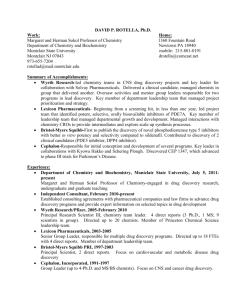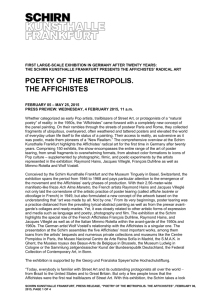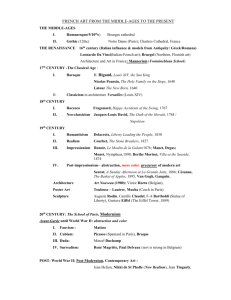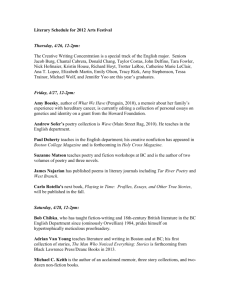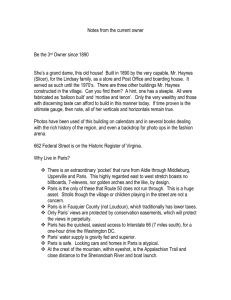mimmo rotella - GALERIE TORNABUONI ART PARIS
advertisement
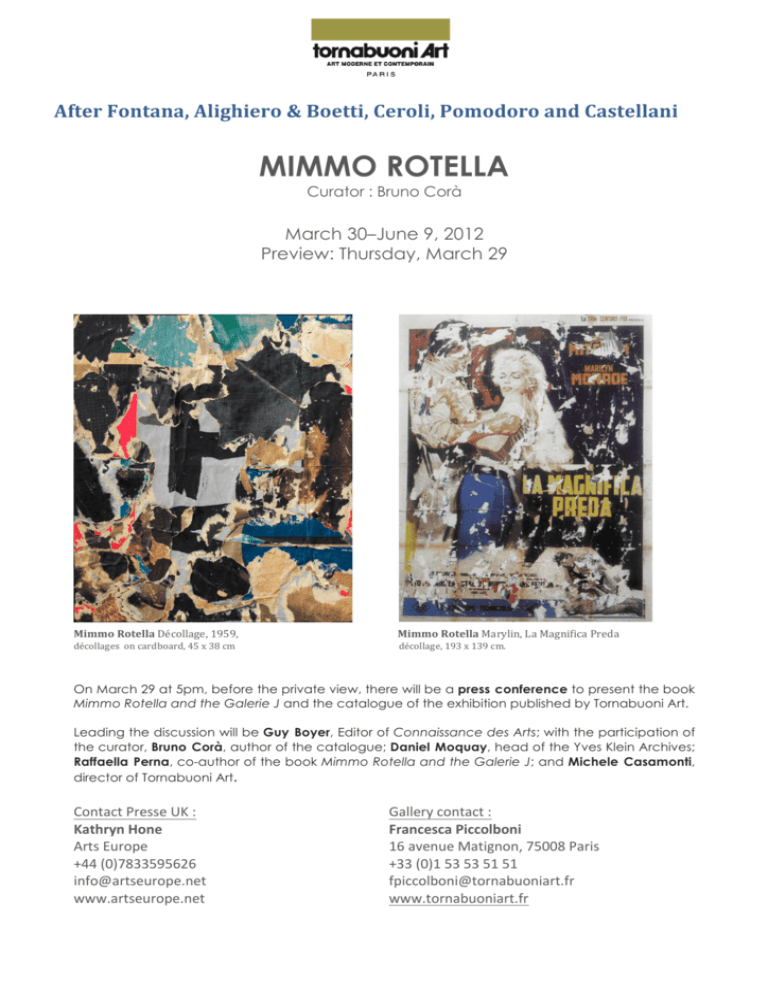
After Fontana, Alighiero & Boetti, Ceroli, Pomodoro and Castellani MIMMO ROTELLA Curator : Bruno Corà March 30–June 9, 2012 Preview: Thursday, March 29 Mimmo Rotella Décollage, 1959, Mimmo Rotella Marylin, La Magnifica Preda décollages on cardboard, 45 x 38 cm décollage, 193 x 139 cm. On March 29 at 5pm, before the private view, there will be a press conference to present the book Mimmo Rotella and the Galerie J and the catalogue of the exhibition published by Tornabuoni Art. Leading the discussion will be Guy Boyer, Editor of Connaissance des Arts; with the participation of the curator, Bruno Corà, author of the catalogue; Daniel Moquay, head of the Yves Klein Archives; Raffaella Perna, co-author of the book Mimmo Rotella and the Galerie J; and Michele Casamonti, director of Tornabuoni Art. Contact Presse UK : Kathryn Hone Arts Europe +44 (0)7833595626 info@artseurope.net www.artseurope.net Gallery contact : Francesca Piccolboni 16 avenue Matignon, 75008 Paris +33 (0)1 53 53 51 51 fpiccolboni@tornabuoniart.fr www.tornabuoniart.fr “Mimmo Rotella is an essential figure in post-war Italian art” Michele Casamonti, director of Tornabuoni Art Today his work is found in numerous museums and collections throughout the world, but in the 1950s Mimmo Rotella (born in Catanzaro, Calabria, 1918; died in Milan 2006) was one of the first to turn the language of art upside down by using materials from the urban environment, particularly advertising posters, which he collected then changed by lacerating them. He was also the only Italian to belong to the French New Realists, even though he didn’t sign their manifesto. Pierre Restany, who became aware of him in Rome from 1958, talked about the man who “showed us the skin of the walls of our cities”. Restany recognised that the spontaneity of Rotella’s work marked him out from contemporaries such as Raymond Hains, Jacques Villeglé and François Dufrêne. Since opening in Paris in 2009, Tornabuoni Art has already staged solo shows for Fontana, Boetti, Ceroli, Pomodoro and Castellani. In this spirit it is now putting on the biggest retrospective of Rotella ever staged in a French gallery with 50 works, most of them from the artist’s rarest and most creative period from 1954 to 1964. The exhibition is curated by Bruno Corà. Mimmo Rotella Comanceros, 1963-­‐1974, décollage, cm 192x140, Signed lower right Thoroughly avant-garde Mimmo Rotella is thoroughly avant-­‐garde. In 1949, while he was searching for new forms of self-­‐expression, he even invented a phonetic poetry made up of sounds and words without any sense, for which he coined the term “épistaltique language”. He spent time as an artist in residence in the United States, where he met Rauschenberg, Cy Twombly, Pollock and Kline. He was later to meet de Kooning and Rothko in Rome in 1960. But in 1953 he underwent a crisis during which he stopped painting, saying that “everything in art has already been done”. It was in 1954 that he had what he called a “Zen illumination”: he discovered the advertising poster as a means of expression, and invented the tearing method that he was to use for the rest of his life. By carrying out what he called “double décollage” – first detaching the poster from the wall, then tearing it in his studio – Mimmo Rotella gathered images from the street to turn them into works of art. In 1958, in his Cinecittà series, he worked on cinema posters in which he isolated faces and silhouettes. From 1956 he gained recognition and awards for his work (Graziano prize in 1956, Battistoni prize n 1957…). He exhibited in the Galerie J in Paris, founded by Pierre Restany and Jeannine de Goldschmidt, which was the hub of the activities of the New Realists. He also took part in the Venice Biennale in 1964. Most of the works in the Tornabuoni restrospective come from this fertile period in his career. Mec-art, rubbing, effacing, blanks and over-painting Just as the press was becoming more and more interested in this “posterism” phenomenon, Mimmo Rotella moved to Paris and worked on a new procedure that in 1965 he called Mec-­‐art, which consisted of projecting images in negative onto canvases covered in light-­‐sensitive emulsion. Then he experimented with superimposing and chopping up advertising images, the opposite of his former method. He also reduced magazine adverts with solvents, which he called frottage, or made them completely disappear through effaçage. Mimmo Rotella, Italia e Corona (Italy and Crown), 1962, décollage on canvas, 57 x 57 cm. Signed lower right: Rotella A graffiti artist before the term was invented When he returned from Paris to live in Milan in 1980, Rotella had the concept of a series of “blanks”, erased advertising bills covered with blank sheets like expired publicity posters. He later invented over-­‐painting, graffiti art before the term was invented. He drew signs, love messages or written words on to posters that were torn up and stuck on to canvas. In 1990 Mimmo Rotella was included in the exhibition “Art and Pub” [Art and Advertising] at the Pompidou Centre in Paris, as well as in a show called “High and Low” at MoMA in New York. He was also invited to take part in the “Italian Metamorphosis” exhibition at the Guggenheim in New York in 1994, then again at the Pompidou for “Face à l”histoire” [In the Face of History], and in the “Halls of Mirrors” show at the Museum of Contemporary Art in Los Angeles. Mimmo Rotella, Classic , 1999, décollage and painting on canvas, 195 x 195 cm About Tornabuoni Art Founded in 1981 in Florence by Roberto Casamonti in the street after which the gallery was named, Tornabuoni went on to open galleries in Crans Montana in Switzerland in 1993, in Milan in 1995, Portofino in 2001, Forte dei Marmi in 2004, Venice in 2005 and finally in Paris in 2009. Since opening in Paris, Tornabuoni Art has put on a series of exhibitions on post-­‐war Italian artists: Fontana, Boetti, Ceroli, Pomodoro and Castellani. Mainly specialising in Italian art from the second half of the 20th century, the gallery has a permanent display of significant works by the major Italian artists of the 20th century: de Chirico, Morandi, Balla, Severini, as well as international avant-­‐garde artists such as Picasso, Mirò, Kandinsky, Hartung, Poliakoff, Dubuffet, Lam, Matta, Christo, Warhol, Wesselmann and Basquiat. Mimmo Rotella, Fetish , 1999, décollage on canvas, 139 x 120 cm. Signed lower right : Rotella/99

